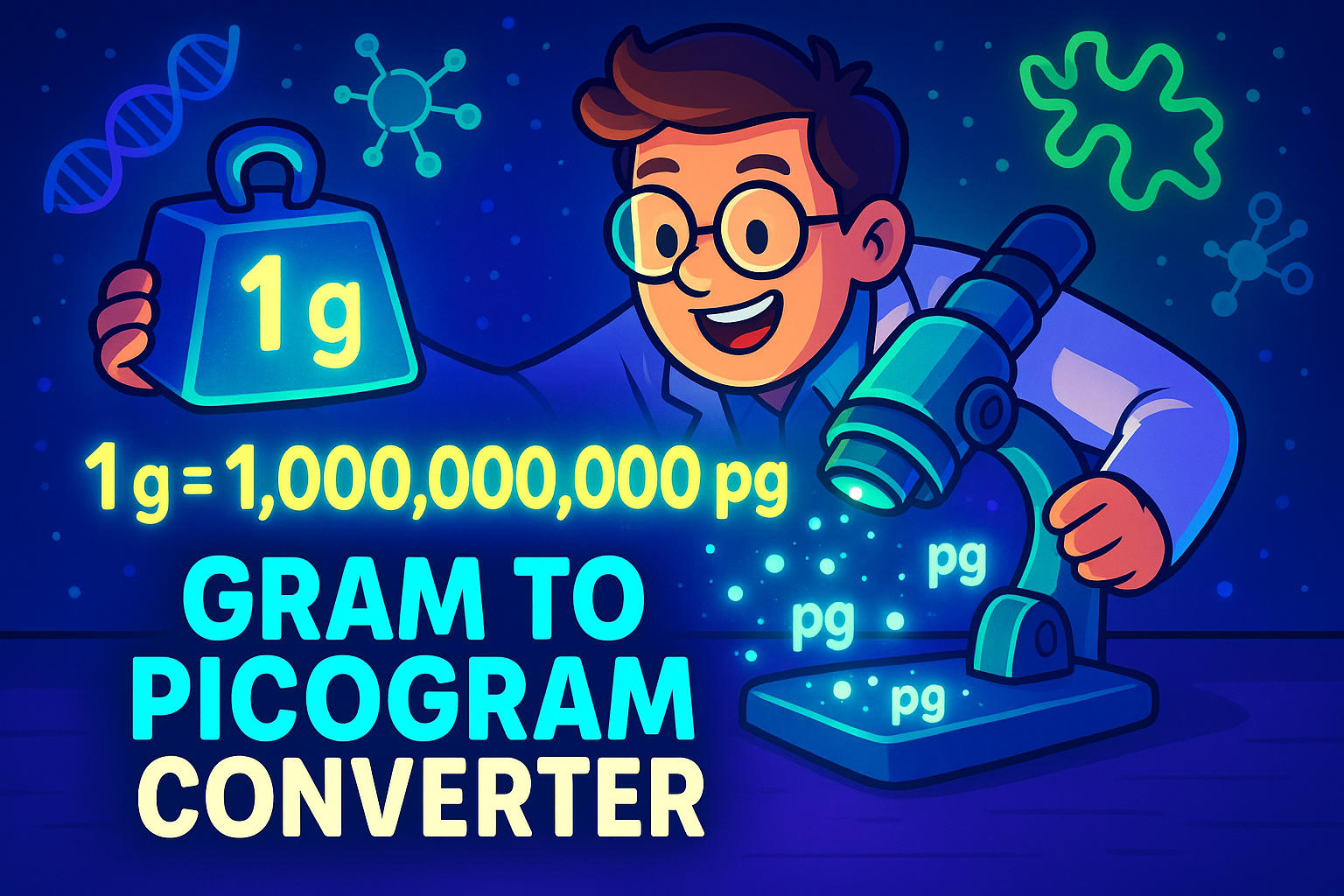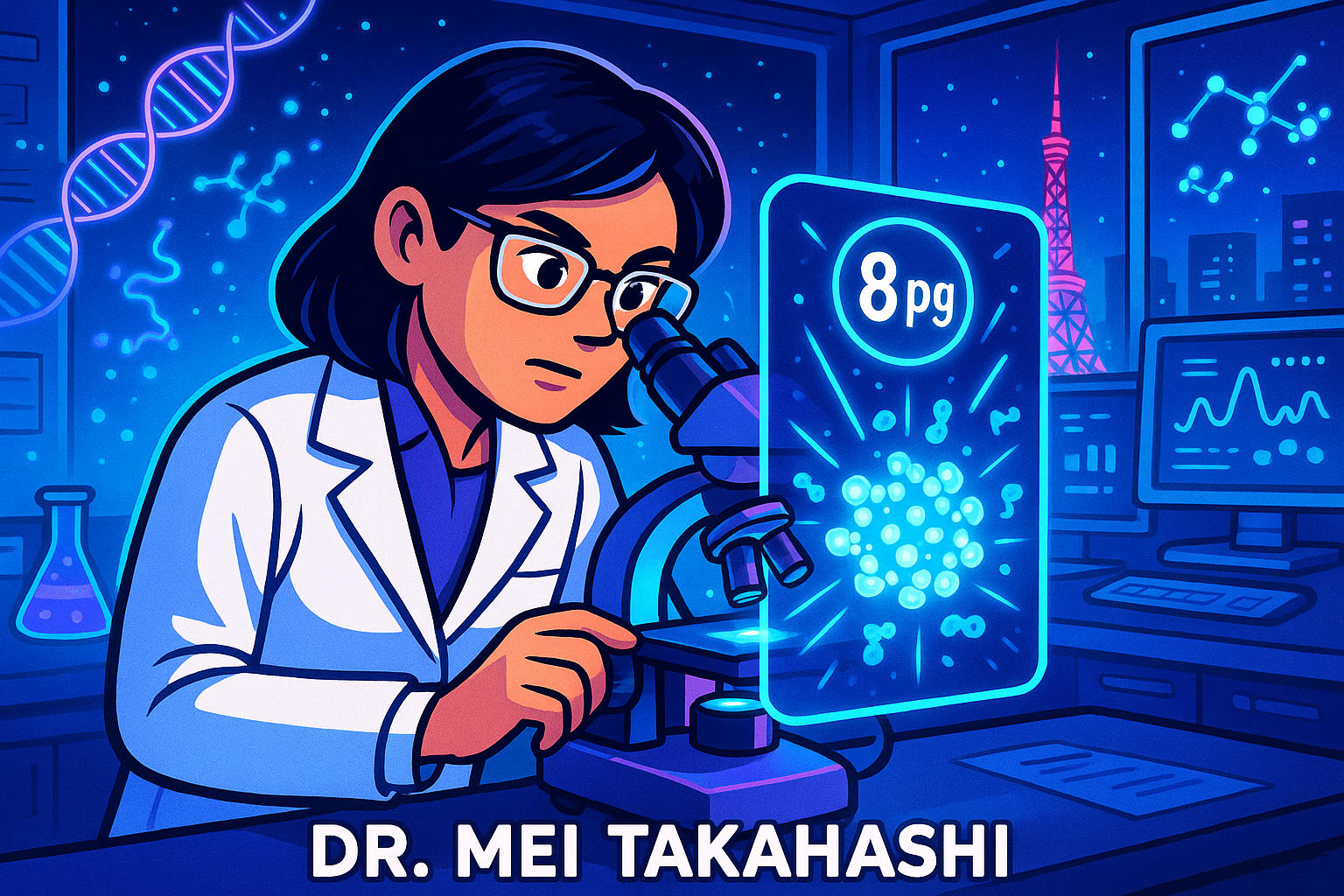gram to picogram – How to convert g to pg
Need to convert grams to picograms? Welcome to the ultra-microscopic world where one gram breaks into a trillion tiny units. Converting grams to picograms (g to pg) is essential in molecular biology, particle physics, and pharmaceutical R&D. This guide will explain what grams and picograms are, how to convert between them, and why these units matter.
For other conversions across scales, check out our Weight Converter.

What is a Gram and a Picogram?
-
A gram (g) is a fundamental unit of mass in the metric system. It’s widely used for daily items like sugar, medicine, and letters—but also plays a vital role in research and manufacturing. It is commonly used: cooking, chemistry, and nutrition
-
A picogram (pg) is one trillionth of a gram. That’s 1/1,000,000,000,000 g. It’s a unit so small that it’s mostly used in cutting-edge scientific fields, such as genetics, toxicology, and particle detection. It is commonly used: DNA quantification, nano-drug dosage,
How to Convert Gram to Picogram?
This is a straightforward conversion using scientific notation:pg = g × 1,000,000,000,000
Example: If you have 0.003 g:0.003 × 1,000,000,000,000 = 3,000,000,000 pg
For advanced precision, use our Converter for all metric conversions.
Did You Know?
-
A teaspoon of sugar contains about 4 grams, which translates to 4 trillion picograms—enough to power thousands of tiny biochemical experiments.
-
NASA closely tracks even gram-level losses in heat shield material during spacecraft re-entry tests. These “missing grams” can determine mission success or failure.
-
A common COVID-19 antigen test is sensitive to as little as 100 picograms of viral protein—highlighting the importance of precision in diagnostics.
-
In cancer research, some experimental therapies are delivered in doses of under 50 pg, targeting single cells without damaging surrounding tissue.
The Researcher Who Chased a Trillionth: Mei’s Discovery
Dr. Mei Takahashi wasn’t looking for global recognition—just data. While studying neurodegenerative proteins in a Tokyo lab, she stumbled across a tiny protein fragment no larger than 8 picograms in concentration. It was nearly undetectable.
Other labs had missed it. The instruments barely registered it. But Mei persisted.
Over months, she built a custom model to measure the picogram fragment more accurately. The result? A breakthrough biomarker for early-stage Parkinson’s disease, now cited in over 200 medical journals.
“I used to think a picogram was too small to matter,” she said in a 2023 TEDx talk. “Now I know—a trillionth of a gram can change a trillion lives.”

Conclusion
The gram to picogram conversion may seem extreme, but it’s vital in modern science, healthcare, and engineering. With 1 g = 1,000,000,000,000 pg, this unit unlocks a microscopic view of the world.
Want to explore more micro or nano unit conversions? Try out tools:

